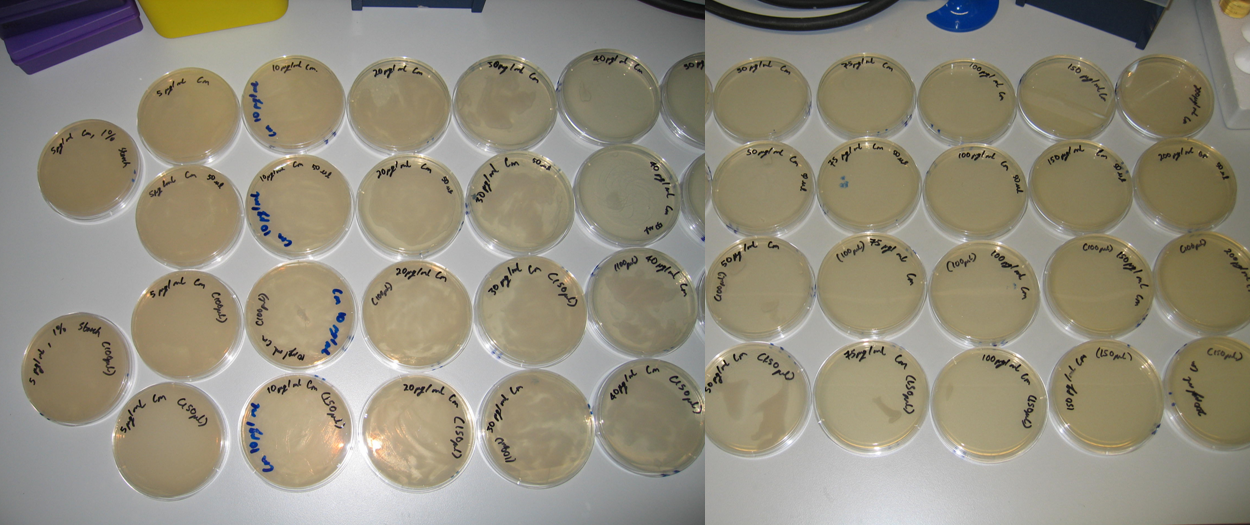Team:Imperial College/CAT
From 2008.igem.org
| Line 3: | Line 3: | ||
===Chloramphenicol Acetyltransferase Characterisation=== | ===Chloramphenicol Acetyltransferase Characterisation=== | ||
{{Imperial/Box1|| | {{Imperial/Box1|| | ||
| - | + | We have characterised the chloramphenicol concentrations at which chlorampehnicol acetyltransferase ([http://partsregistry.org/wiki/index.php?title{{equals}}Part:BBa_J31005 Part: BBa_J31005]) (CAT) will protect cells, allowing them to grow and thrive. This is essential as it allows us to make the correct selections when using the CAT gene. | |
| Line 9: | Line 9: | ||
| - | To this end, characterisation of chloramphenicol | + | To this end, characterisation of chloramphenicol acetyltransferase was carried out according to this [https://2008.igem.org/wiki/index.php?title{{equals}}Team:Imperial_College/Resistance protocol]. |
}} | }} | ||
| Line 18: | Line 18: | ||
[[Image:CAT_Working_Concentration.PNG{{pipe}}700px{{pipe}}center]] | [[Image:CAT_Working_Concentration.PNG{{pipe}}700px{{pipe}}center]] | ||
<br> | <br> | ||
| - | The construct containing the CAT gene was | + | The construct containing the CAT gene was integrated into the ''B. subtilis'' genome for characterisation. As such, the CAT gene is single copy only. CAT will be able to protect a cell from higher levels of chloramphenicol if it is present in a construct on a plasmid (particularly a high copy number plasmid). |
| - | Chlorampehnicol can be used for selection up to a concentration of | + | Chlorampehnicol can be used for selection up to a concentration of 30 μg/ml. If a higher concentration is required, a bacterium possesing a single highly expressed copy of chloramphenicol acetyltransferase can survive (with difficulty) at up to 75 μg/ml of chloramphenicol. |
| - | at up to | + | |
}} | }} | ||
<br><hr>{{Imperial/EndPage|Major_Results|Major_Results}} | <br><hr>{{Imperial/EndPage|Major_Results|Major_Results}} | ||
Revision as of 00:40, 30 October 2008
Chloramphenicol Acetyltransferase Characterisation
|
|||||||||||
 "
"


